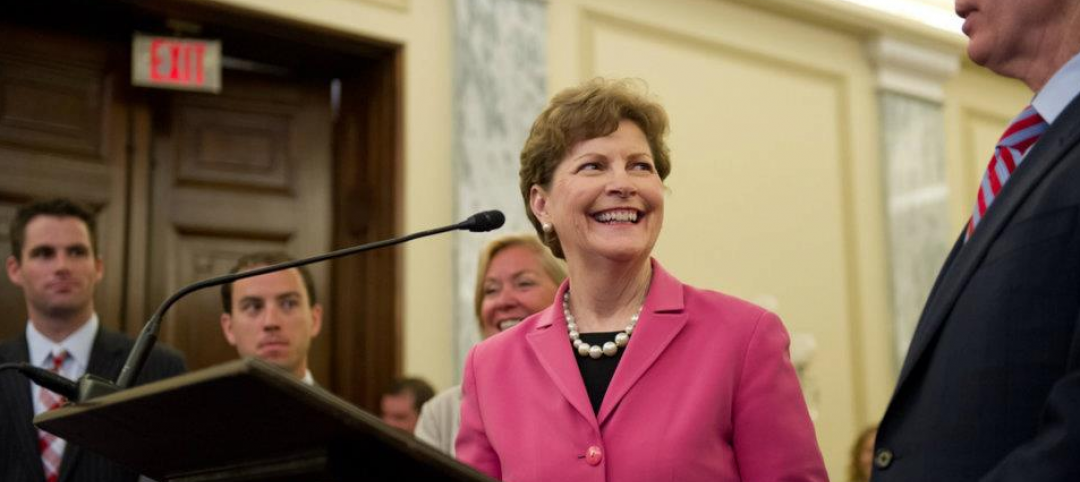The way the federal government analyzes intense rain events isn’t keeping up with the reality of climate change, and that has serious implications for infrastructure projects and the availability of, and rising cost of, flood insurance.
Severe rainstorms, sometimes described as “atmospheric rivers” or “torrential thunderstorms,” are making the concept of a “1-in-100-year flood event” obsolete, according to a report from First Street Foundation, an organization focused on weather risk research.
These events are occurring more frequently due to the impact of climate change, but federal rainfall analysis, managed by the National Oceanic and Atmospheric Administration, isn’t keeping up with the new weather conditions, First Street says.
Half the people in the U.S. live in a county where a 1-in-100-year flood is at least twice as likely now as it had been in the past, coming once every 50 years instead of every 100 years. In some areas, a so-called “1-in-100-year” rainfall could now happen far more frequently—as often as every 5 to 10 years.
The outdated analysis has serious implications for the way infrastructure projects are initiated and designed. And, because FEMA’s federal flood insurance program greatly underrepresents the number of people that could fall into FEMA’s Special Flood Hazard Areas, millions of Americans may be unaware of their current flood risk.
Inaccurate flood risk data due to underestimating the impact of rainfall also impacts the cost and availability of flood insurance—this is especially true for property that isn’t close to the ocean or inland bodies of water.
The government is working to remedy the situation, though. NOAA, as reported by CNN, says it is working on a revamped approach to its rainfall analysis that is expected to be completed in 2027.
Related Stories
| Oct 8, 2013
New Orleans advances $1 billion construction plan including new airport terminal
New Orleans plans to invest $1.1 billion in construction projects over the next five years.
| Oct 8, 2013
Report on large New York City buildings shows progress on energy efficiency
Buildings in New York City have been found to have a median score of 67 out of 100 in Energy Star's Portfolio Manager, an increase from 64 last year, and above the national average of 50, according to a study prepared by the Natural Resources Defense Council for the office of Mayor Michael Bloomberg.
| Oct 8, 2013
ConsensusDocs offers online prequalification management application to boost industry efficiency
In collaboration with ConsensusDocs, iSqFt has launched a new online platform designed to make the prequalification process for contractors and subcontractors seeking new work more efficient.
| Oct 8, 2013
Government shutdown closes E-Verify, could hamper construction hiring
E-Verify, the online federal program used to check the immigration status of prospective hires, has been closed due to the federal government shutdown.
| Oct 3, 2013
Florida contractors worry that regulations will hamper their ability to hire
Regulations such as the E-Verify rule and the Affordable Care Act could hinder contractors from hiring additional workers, according to some Florida contractors.
| Oct 3, 2013
Fall protection violations top OSHA citations list
Violations of fall-protection standards in fiscal 2013 are again the most frequent source of citations from the Occupational Safety and Health Administration, according to its top 10 list.
| Oct 3, 2013
Arizona utility pushes for change in building codes to boost efficiency on all commercial projects
Many large construction projects in Arizona are going green by paying attention to energy efficiency, but smaller buildings that are often rented out haven't yet jumped on the bandwagon.
| Oct 3, 2013
Bipartisan energy efficiency bill stalled; may not be revived this year
The Senate spent the first two weeks of September trying to pass bipartisan energy efficiency legislation, commonly known as Shaheen-Portman (S. 1392) that would have impacted building codes.
| Oct 3, 2013
LEED credential exams will feature LEED v4 material beginning next spring
The LEED Professional Credential exams for the LEED Green Associate and LEED AP with specialty designations will feature LEED v4 material beginning in late spring 2014.
| Sep 26, 2013
Ballot period on National CAD Standards open until Oct. 13
The Ballot Comment Period to update the nation’s leading computer-aided design (CAD) standard is now open.











